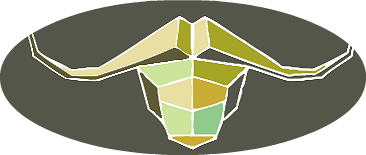Main Page
|
| ||||
PRY
What is PRY
PRY is a bio-economic livestock herd/population model developed by Dr. habil. Richard Baptist (formerly of the University of Nairobi and the University of Hohenheim) in 1988. PRY is a species independent, livestock-driven, herd model, which combines deterministic and stochastic procedures and allows for assessing herd/population productivity, simulating herd/population development, comparing productivity between livestock systems and management strategies within livestock systems.
PRY derives a productivity index (PI) "total output value/dry matter intake (TOV/DMI)" as a measure of overall productivity of an animal production system. Dry matter intake is chosen as denominator in this index because feed is considered the most limiting production asset as it generally accounts for the major part of production costs and is the main input factor in extensive animal husbandry systems.
PRY in its original DOS based version consists of six single components or modules (DIC, PIC, SAM, FOC, BOI, APE). Demographic input parameters are entered and stored in DIC. Produce-related input parameters are entered and stored in PIC. Deterministic modelling components SAM, FOC, and BOI derive population structure, numeric offtake, life expectancies and potential rate of increase of population for an infinitely large, closed equilibrium population (a population at steady state) from the DIC parameters. Total offtake value per dry matter intake for different disposal strategies is derived adding information from the PIC parameters, thus the model permits to find an optimal culling strategy (FOC). With a specific culling regime specified, a detailed breakdowns of offtake and intake (BOI) can be derived. The stochastic animal population emulator APE permits the simulation of herd/population development over time.
PRY was further developed by Dr. Richard Baptist into an MS Excel add-in named HerdLife. HerdLife combined the different modules above and eased handling of the model, particularly parameter input as well as display and storage routines.
In a current effort encouraged by the model author, PRY / HerdLife will be linked to external data sources – i.e. spreadsheet or database applications often used in research projects as well as livestock management programmes such as CowSense (TM by Midwest Microsystems). Thus, input parameters can be directly read/retrieved from data either routinely collected in commercial livestock operations or data generated by research projects. The initiative is carried forth by a consortium between Science Data Services (Dr. Simon Riedel), the German Institute for Tropical and Subtropical Agriculture DITSL (Dr. Christian Hülsebusch and Prof. Dr. Brigitte Kaufmann) and the University of Kassel (Dr. Uwe Richter, Prof. Dr. Eva Schlecht). The consortium appreciates the generous permission of the author, Dr. habil. Richard Baptist, to further develop his valuable tool with the aim to provide a flexible decision support tool for the management of livestock systems.
In a first step, the model was transcribed into a standalone application running under Windows XP/7 named PRY 3.0 beta – which can be downloaded here for test purposes
Lidast
The Livestock Data Store is a Database Project which was build to manage and store livestock herd data in an one-animal-per-row format. Data can be imported from several seed-formats, viewed and modified within the client and exported. Further, individual Model input datasets can be created from herds stored in the database. Up to now, only the creation of PRY Models is made available, others will follow and can be provided on request. The creation process is semi-automatic, so that all variable parameters can be fine tuned by the user.
At this actual state (Software Version 1.0.13), data can be imported from CowSense(c) and Progeny History Surveys. Since the Progeny History Survey Import schema is cut down to the most important reproductive parameters of a herd, it can be used for other source data as well.
Lidast is being developed by a joint team of researchers from the University of Kassel, University of Goettingen, DITSL and Science Data Services. You may contact the team here.
